Craving a real escape from the city’s glow to see the night sky as it’s meant to be? Across the U.S., a bunch of dark sky parks have stepped up to give stargazers a shot at the cosmos in all its unfiltered glory.
These protected areas keep artificial light to a minimum, so you can spot thousands of stars, the Milky Way, and the occasional meteor shower—stuff you’d never catch from the middle of town.
From Death Valley’s wild desert vibes to the remote Utah and Arizona wilderness, America’s dark sky parks are hard to beat for pure stargazing. Each park has its own flavor, with some offering telescope rentals, night sky tours, or regular astronomy programs.
Whether you’re a pro with a telescope or just someone hoping to reconnect with the universe, these spots promise the kind of night skies that stick with you long after you’ve left.
1. Big Bend National Park, Texas
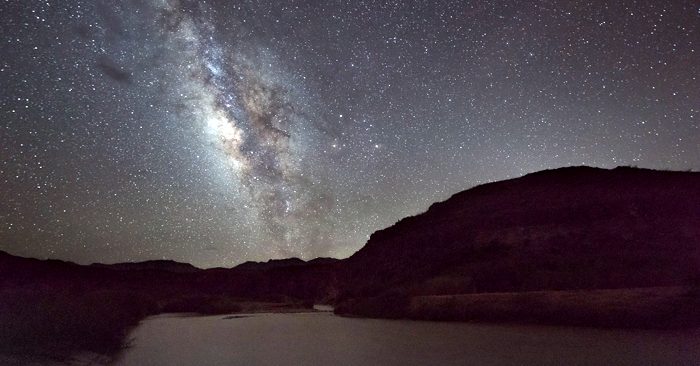
- Big Bend National Park claims the title of darkest national park in the U.S.—a dream come true for stargazing enthusiasts.
If you want to see stars, Big Bend is in a league of its own. Tucked away in southwest Texas, the park’s remote location means you get night skies that are almost untouched.
The isolation is the secret sauce here. Far from city lights, Big Bend puts on an astronomical show few places can rival. On a clear night, the Milky Way looks like someone spilled a bucket of glitter overhead.
You don’t need fancy gear. Just grab a blanket, let your eyes adjust, and look up. Sometimes the park hosts star parties, and you can join other sky-watchers or chat with rangers about what’s twinkling above.
Visiting during a new moon is your best bet for the darkest skies. The contrast between the desert and the starry sky? It’s something you’ll remember forever.
2. Cherry Springs State Park, Pennsylvania
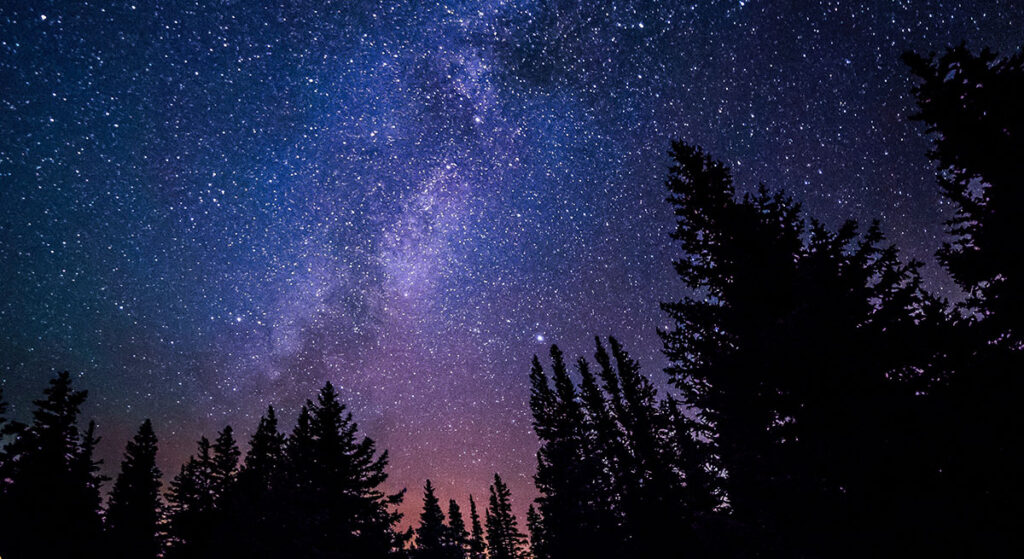
- Up in northern Pennsylvania, Cherry Springs is probably the East Coast’s top spot for real darkness—perfect for both beginners and die-hard astronomers.
Cherry Springs State Park feels like it was made for night sky lovers. It’s tucked in Potter County and has earned its spot as one of the darkest places on the eastern seaboard. On a clear night, you might spot up to 30,000 stars without a telescope.
Back in 2000, Cherry Springs became Pennsylvania’s first dark sky park. The state has worked to keep things that way, cutting down on light pollution in the area.
You’ve got options depending on your mood. The Night Sky Public Viewing Area is great for a quick visit, while the Overnight Astronomy Observation Field is there for the serious stargazers.
The park stays open year-round, but summer and fall are comfiest for long nights outside. Even in summer, though, the temps drop fast after sunset—bring a jacket!
3. Death Valley National Park, California

- Death Valley became the third International Dark Sky Park in the National Park System.
Death Valley isn’t just about record-breaking heat. After sunset, it turns into a stargazer’s wonderland. The desert’s remoteness and careful management keep the skies incredibly dark.
On a clear night, the Milky Way stretches across the sky in detail most people never get to see. It’s honestly jaw-dropping.
Check out Zabriskie Point for a dramatic foreground if you’re into night photography. The Mesquite Flat Sand Dunes are another favorite for stargazing under a wide-open sky.
Dante’s View is paved and easily accessible, while Badwater Basin and Harmony Borax Works are also great for setting up a telescope or just lying back and taking it all in.
The combination of Death Valley’s stark landscape and those wild night skies? It’s unforgettable.
4. Capitol Reef National Park, Utah
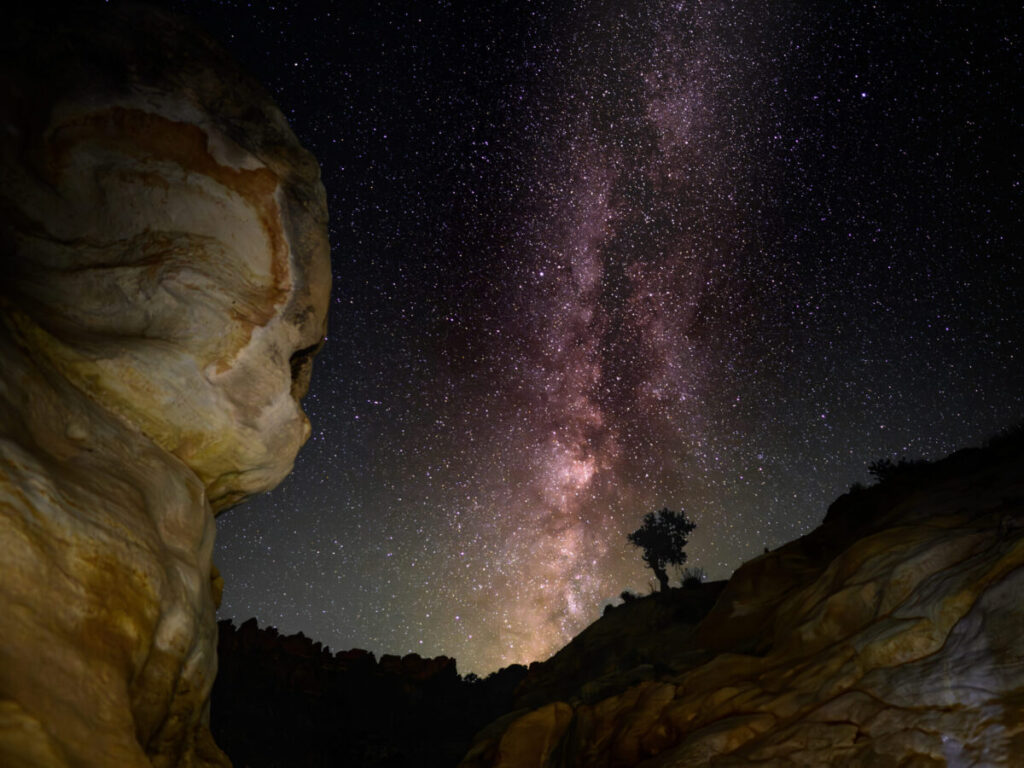
- Capitol Reef earned its International Dark Sky Park status in 2015 and offers some of the darkest skies anywhere in the U.S.
Did you know Utah has more Dark Sky Parks than anywhere else? Capitol Reef is definitely one of the standouts. Its south-central Utah location keeps light pollution at bay.
On clear nights, the Milky Way puts on a show you won’t soon forget. The contrast between the red rocks by day and the stars at night is something special.
Rangers run regular stargazing programs, helping visitors spot constellations and planets. These events are great for everyone, whether you’re a newbie or you know your way around a telescope.
Try Panorama Point or Sunset Point for the best views. Both spots are wide open and perfect for laying out under the stars. Bring a blanket—and maybe some hot cocoa, since even summer nights can get chilly.
5. Great Basin National Park, Nevada
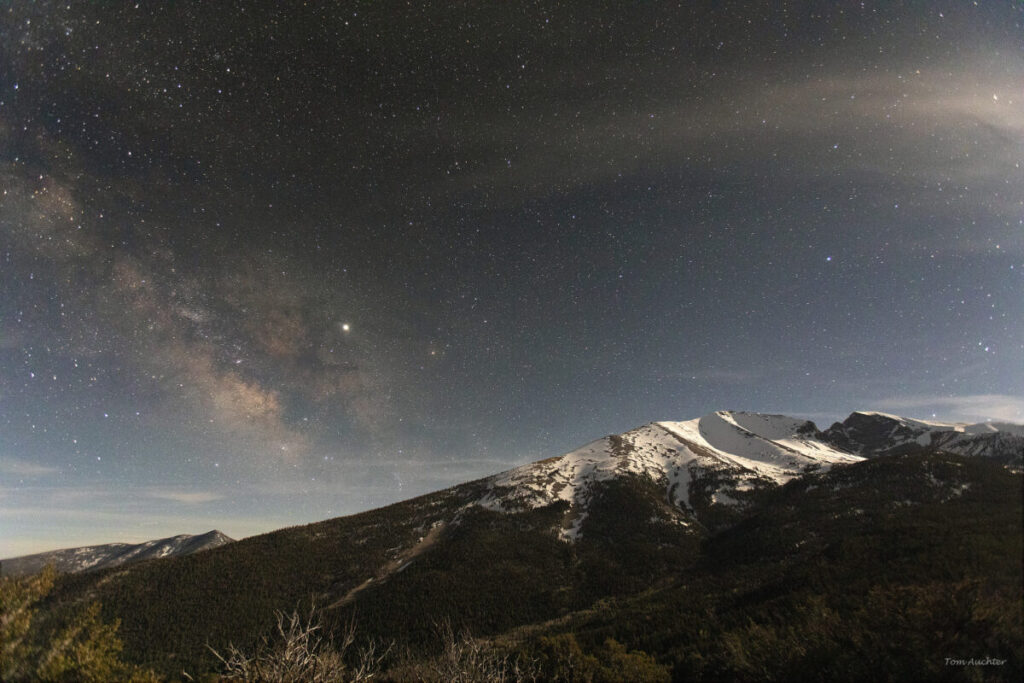
- This hidden gem for serious stargazers picked up Gold Tier International Dark Sky Park status in 2016.
Great Basin National Park doesn’t get a ton of visitors, but that’s a bonus for stargazers. Fewer people means less light, and the night sky is just incredible.
You’ll spot the Milky Way and even the Andromeda galaxy with surprising clarity. The park runs regular astronomy programs at its Astronomy Amphitheater, where Dark Sky Rangers share their knowledge.
Nevada’s first astronomy route, “Park to Park in the Dark,” links Great Basin with another Dark Sky Park along US-95 and US-6. It’s a quiet drive through rural towns with almost zero light pollution.
The park’s out-of-the-way location in eastern Nevada really pays off after dark. Plan your trip around the new moon for the deepest, blackest skies.
6. Baxter State Park, Maine

- Baxter State Park is a hidden gem for stargazers looking for pristine night skies in New England.
Way up in northern Maine, Baxter State Park gives you some of the Northeast’s darkest skies. The nearest town is 15 miles away, so you’re pretty much guaranteed a sky free from city glow.
Baxter’s real draw is its isolation. Barely any light creeps in from nearby, so on a clear night, the stars put on a crazy show.
It’s not officially an International Dark Sky Park yet, but locals and amateur astronomers already know it’s a top stargazing spot. The park’s wilderness has plenty of places to set up your telescope—or just lie back and watch.
Summer is best for comfortable temperatures, but there aren’t many facilities, so come prepared. Definitely bring a red-light flashlight to preserve your night vision.
7. Arches National Park, Utah

• Arches National Park keeps its night skies dark, making it a favorite for stargazers in the Southwest.
When the sun drops behind those famous red rocks, the sky at Arches explodes with stars. The park’s location in rural Utah means you’re spared from city lights.
Panorama Point is a go-to for stargazers, offering a wide view for meteor showers or tracking constellations as they drift overhead.
A red flashlight is a must—regular flashlights mess up your night vision, but red light keeps your eyes adjusted.
Seeing the Milky Way arch over Delicate Arch? That’s a memory you’ll want to keep. Utah’s got more International Dark-Sky Association-certified parks than anywhere, and Arches is one of the best.
8. Bryce Canyon National Park, Utah

- Bryce Canyon isn’t just about hoodoo rock formations—it’s also one of the country’s darkest stargazing spots.
The night sky at Bryce Canyon is something else. The park’s high elevation and remote setting make for thousands of visible stars, planets, and the Milky Way.
Bryce takes stargazing seriously. Regular astronomy programs and star parties let you peek through telescopes and get the scoop from rangers and volunteers.
Try the rim of Bryce Canyon Amphitheater or Natural Bridge Overlook for prime viewing. If you’re up for a walk, the Navajo Loop Trail is another great pick.
Pack warm layers—nights get cold, even in summer. Time your visit with a new moon for the darkest skies, and check the park’s calendar for special astronomy events.
9. Joshua Tree National Park, California
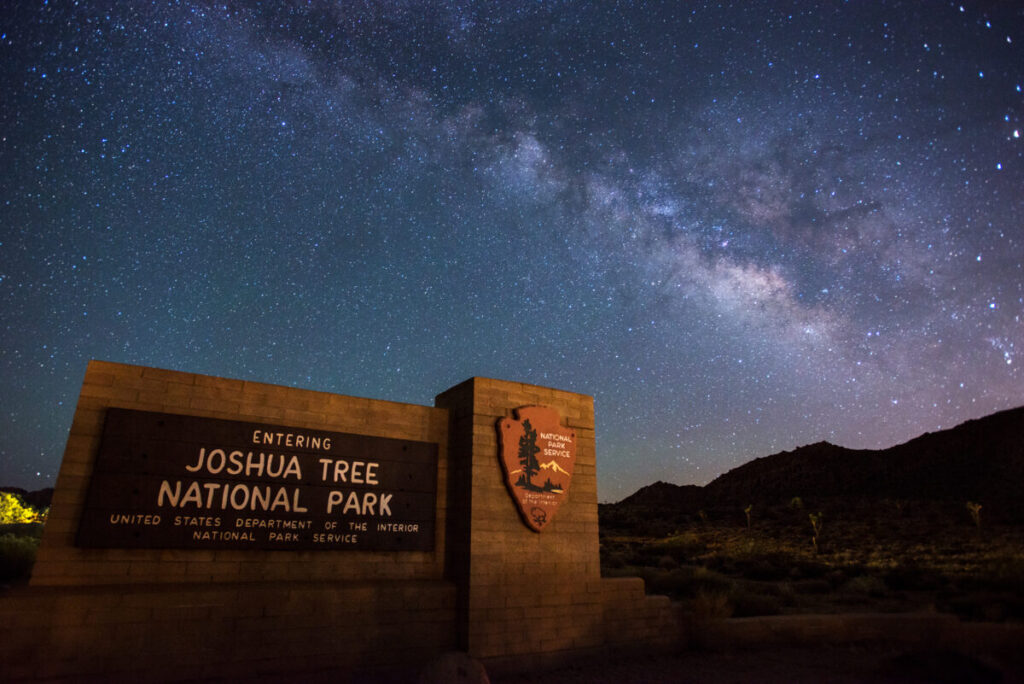
- Joshua Tree’s wild desert landscape and two unique ecosystems make it a stargazing haven in Southern California.
Joshua Tree National Park covers over 800,000 acres and has been an International Dark Sky Park since 2017. The lack of light pollution makes for incredible views of the Milky Way and more.
Four official stargazing areas—Quail Springs, Hidden Valley, Cap Rock, and Ryan Mountain parking lots—give you plenty of options for a night under the stars.
For the darkest skies, head out to Pinto Basin. Out there, you’re far from even the tiniest light source.
What really sets Joshua Tree apart is the surreal landscape: those twisted trees and massive boulders make for killer silhouettes against the stars. It’s an experience you won’t forget anytime soon.
10. Flagstaff, Arizona
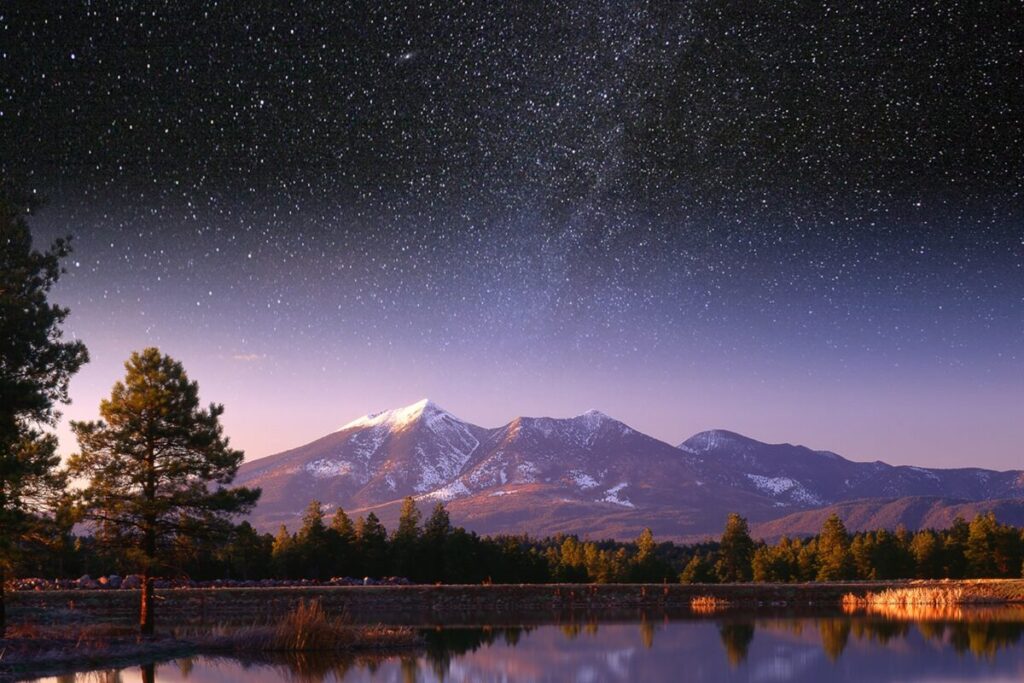
• Flagstaff became the world’s first International Dark Sky City in 2001 and still leads the way in fighting light pollution.
Sitting at 7,000 feet in northern Arizona, Flagstaff offers up some of the most accessible dark skies without needing to leave city limits. The whole city takes dark sky protection seriously, so even in town, you can see a ton.
Lowell Observatory is the place to go if you want to try out a telescope or chat with real astronomers. Fun fact: Pluto was discovered here in 1930!
If you want to get a little farther out, Buffalo Park and Sunset Crater Volcano Park both offer awesome Milky Way views. Wupatki National Monument’s parking lot is a local favorite for a peaceful night under the stars.
During the summer, Arizona Snow Bowl’s high elevation makes for stellar constellation spotting. The mountain backdrop just adds to the magic.
Flagstaff’s community really cares about the night sky. Street lights point downward, and locals are proud of their starry heritage.
What Makes a Park Ideal for Stargazing?
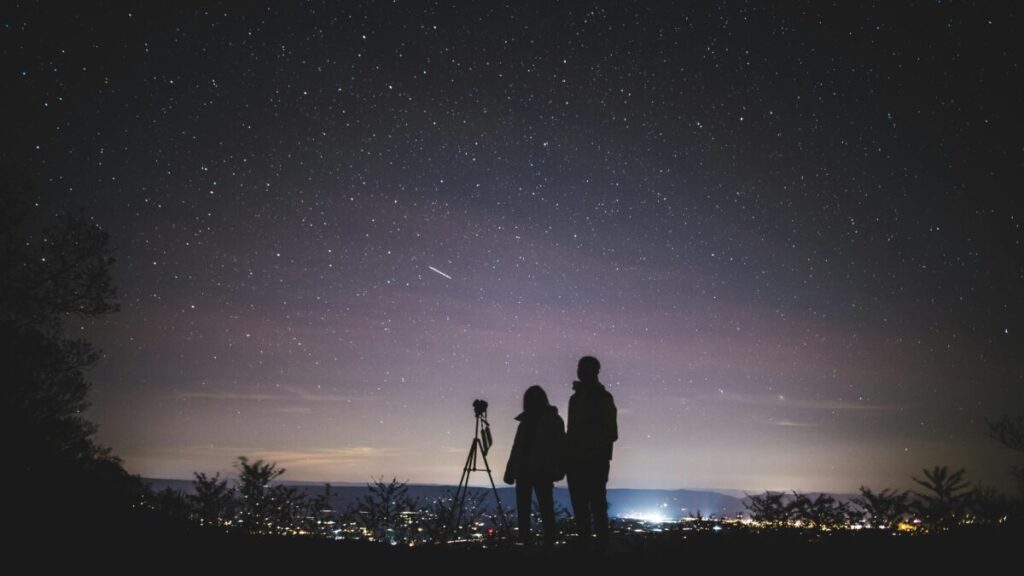
Finding the right spot to watch the stars isn’t just about clear skies. The best places combine super-low light pollution, great atmospheric conditions, and a few creature comforts to make the night more enjoyable.
Light Pollution And Its Impact
Light pollution is every stargazer’s nemesis. It’s that city glow that drowns out the stars. Head far from the city, and suddenly, thousands more stars show up overhead.
The International Dark-Sky Association (IDA) recognizes parks that fight light pollution. These places use strict lighting rules to keep the night sky as dark as possible.
In cities, you might spot just a couple hundred stars. In a certified dark sky park? You could see over 7,000—no joke. Many parks have swapped out old lights for shielded fixtures that point down, cutting out that annoying sky glow.
Optimal Dark Sky Conditions
There’s more to great stargazing than just darkness. Elevation helps a ton—higher up, there’s less atmosphere to blur your view, so stars look sharper.
Dry climates are best, which is why so many top parks are in the Southwest. Less moisture means brighter, clearer stars.
Weather matters too. Parks with more clear nights give you better odds. The best spots usually have:
- Low cloud cover
- Not much rain
- Clean air
- Stable atmospheric conditions
Season matters as well. Summer brings the Milky Way’s core into view up north, while winter nights can be crisp and crystal-clear. So, what are you waiting for?
Accessibility And Guest Facilities
A truly great stargazing park brings together pristine dark skies and visitor-friendly amenities. Look for parks with designated observation areas—clear horizon views, some wind protection, the works.
Many top dark sky parks offer:
- Astronomy programs led by rangers or passionate volunteers
- Public telescopes for anyone to use
- Educational displays about constellations and space
- Red-light only rules after dark to keep night vision intact
Comfortable facilities can really make or break your stargazing night. If you can camp, find nearby lodging, or at least access restrooms, you’ll probably want to linger longer and soak in the show.
Accessibility matters a lot. The best parks build paved paths or viewing platforms so everyone can join in. Some even set up special events for meteor showers or eclipses—those nights get pretty magical.
Tips for an Unforgettable Stargazing Experience

A little prep can turn an average night under the stars into something you’ll remember forever. The right gear, timing, and a bit of respect for park rules—these things connect you to the cosmos in ways you might not expect.
Essential Gear for Night Sky Viewing
First off, bring a good red flashlight. Red light helps your eyes adjust, but you can still see where you’re going. Trust me, you don’t want to trip over a rock while you’re staring up at the Milky Way.
You’ll want a comfy chair or blanket. You might be looking up for hours, and neck strain is real. I learned that the hard way after three hours flat on my back in Death Valley.
Binoculars are honestly a great place to start—forget the fancy telescope for now. A pair of 10×50 binoculars will show Jupiter’s moons and a ton of stars you’d otherwise miss.
Stargazing Essentials Checklist:
- Red flashlight
- Warm layers (summer nights get cold, who knew?)
- Comfortable chair or blanket
- Binoculars or telescope
- Star chart or astronomy app (Stellarium or Sky Guide are solid choices)
- Snacks and water
- Camera with tripod if you’re into night photography
Planning Your Visit Around Celestial Events
Timing really does matter for stargazing. You’ll get the darkest skies during a new moon—so check that before you book your trip.
Meteor showers are a treat, even without any gear. The Perseids in August and Geminids in December put on a wild show, sometimes with up to 100 meteors an hour.
Many parks host ranger-led astronomy programs in the summer. You’ll usually get telescope time and some help picking out what’s up there that night.
Special events—eclipses, planet alignments—can turn your trip into something unforgettable. I watched Saturn and Jupiter appear side by side in Utah once, and honestly, it’s hard to top that.
Staying Safe and Respecting Park Guidelines
Always tell someone where you’re going, especially if you’ll be out in remote areas. Cell service is often spotty in dark sky parks.
Pack out everything you bring in. I know it’s obvious, but trash messes with wildlife and ruins the vibe for everyone. I usually bring an extra bag just for garbage.
Stick to the marked trails and viewing spots. Going off-path can harm fragile habitats and, frankly, it’s risky wandering around at night.
Respect quiet hours and the other folks out there. If you need audio guidance, use headphones, and keep your voice down. The peacefulness is a big part of the magic.
Artificial light ruins dark skies fast. Turn off your headlights when you park, and never shine flashlights up or at other stargazers.
Frequently Asked Questions
Finding the perfect stargazing spot isn’t always easy with so many choices across the USA. Here are some answers to common questions about dark sky parks to help you plan your next adventure.
What are the top-rated dark sky preserves recommended for an unforgettable stargazing experience?
Big Bend National Park in Texas stands out as one of America’s best stargazing destinations. Its remote location gives you some of the darkest skies in North America—almost no light pollution.
Cherry Springs State Park in Pennsylvania is a favorite for East Coast stargazers. On clear nights, the Milky Way’s so bright it actually casts shadows.
Death Valley National Park might sound intimidating, but its Gold Tier Dark Sky status makes it worth the trip (just go in the cooler months). The huge, open desert gives you an incredible view of the stars.
Can you suggest some dark sky parks that are easily accessible from major cities?
Capitol Reef National Park is about three and a half hours from Salt Lake City, so it’s one of the more reachable dark sky parks in Utah. The red rocks make night photography extra stunning.
If you’re on the West Coast, Joshua Tree National Park is just two or three hours from LA or San Diego. It’s wild how quickly you can leave city lights behind and find yourself under a sky full of stars.
Cedar Breaks National Monument is about three hours from Las Vegas—a perfect escape if you want to swap neon for natural starlight.
What is an International Dark Sky Park and how many are there in the United States?
An International Dark Sky Park is a spot certified by the International Dark-Sky Association for its amazing starry nights and efforts to keep the nocturnal environment protected. These parks follow strict lighting rules to keep light pollution low.
Right now, the United States has over 60 certified International Dark Sky Places, with more than 30 specifically called Dark Sky Parks. The list keeps growing as more places realize how important it is to protect our night skies.
Are there any dark sky national parks that offer ranger-led stargazing programs?
Great Basin National Park in Nevada runs some fantastic ranger-led astronomy programs during the summer. Their “Half the Park is After Dark” nights include telescope time and constellation tours.
Arches and Canyonlands in Utah both host seasonal night sky programs. Rangers bring telescopes and point out constellations, planets, and deep-sky stuff you’d probably miss on your own.
Grand Canyon National Park, a Dark Sky Park since 2019, puts on regular star parties and nighttime ranger talks. You get to learn about the universe while gazing into the canyon—pretty surreal.
How can I find a dark sky area near me for star photography and observation?
The International Dark-Sky Association website (darksky.org) has a searchable database of certified Dark Sky Places all over the country. You can filter by location to see what’s close.
A lot of astronomy clubs host star parties in spots with good viewing. These events are great for beginners, and club members often share their telescopes.
You can also check out light pollution maps online to spot darker areas within driving distance. Sometimes even a small state park or any place away from city lights can give you a solid night of stargazing.
Which dark sky locations are best for viewing meteor showers and other celestial events?
Death Valley National Park really shines for meteor showers like the Perseids in August or the Geminids in December. There aren’t any big obstacles, so you can just lay back and watch meteors streak across the entire sky.
Cherry Springs State Park features an open field that’s basically made for meteor watching. You get this full 360-degree view, which honestly makes spotting shooting stars a lot more likely.
Great Basin National Park sits at a high elevation and offers some of the darkest skies around. If you’re hoping to catch faint celestial events—like the zodiacal light or a subtle meteor shower—it’s tough to beat.
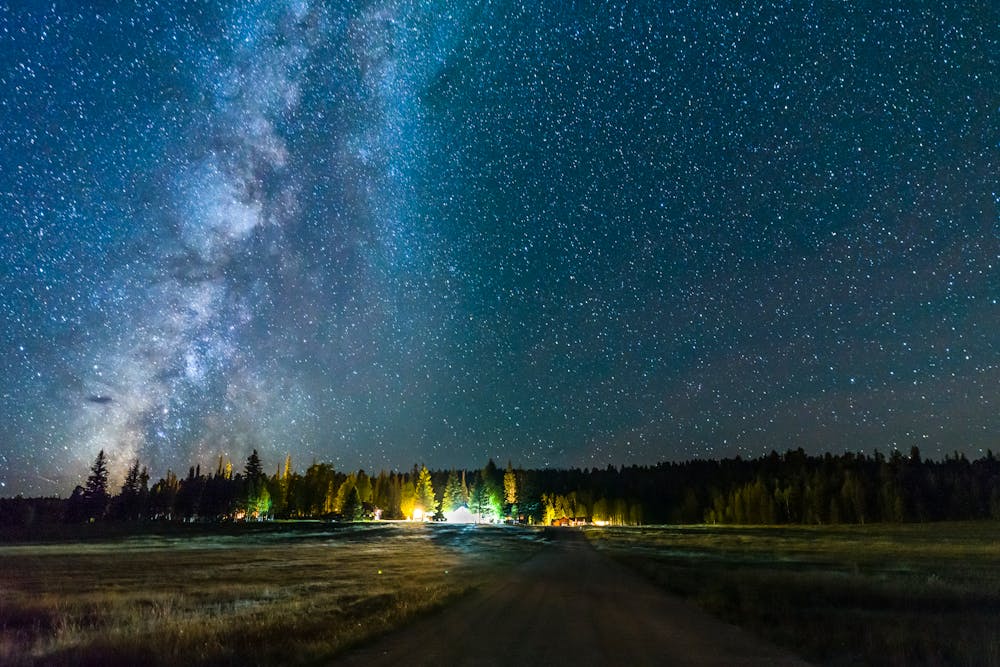
Leave a Reply